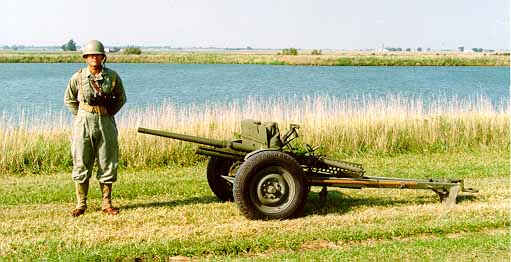
37 MM ANTI-TANK GUN, M3
The 37 mm Anti-tank Gun, M3
In 1935 the U.S. Army began the development of an anti-tank gun,
a newly conceived field artillery piece whose mission was to
defeat the recently developed tanks of that era. Foreign anti-tank guns
were studied including the 25 mm French Hotchkiss and the 37 mm
German Rhinemetall. In 1937 with World War II imminent, the Ordinance
Department issued a requirement for an anti-tank gun weighing less
than 1000 lbs so that it could be transported by a jeep.
The resultant design was essentially a copy of the
37 mm Rhinemetall with minor modifications. The barrel size was 37 mm with a
dropping block breech. Anti-tank ammunition was developed with a projectile
velocity of 2900 fps. The small anti-tank gun served as the predecessor
of the 37 mm guns for the Stuart light tanks and the M8 armored car.
Between 1939 and 1943 over 20,000 37 mm anti-tank guns were manufactured.
The M3 37 mm anti-tank gun proved too light a caliber to be effective
against tanks in North Africa and Europe. In the Pacific theater the M3
anti-tank gun was more effective against Japanese armor and proved
to be an accurate direct fire weapon for stationary hard targets.
A large hand crank wheel controls traverse of the barrel while the
small knob below it changes gun elevation.
ADDITIONAL TECHNICAL DATA 37 MM ANTI-TANK GUN, M3
Length............10 ft. 10.5 in.
Width..............5 ft. 3.5 in.
Height.............3 ft. 2 in.
Weight.............912 lbs.
Firing Rate........5-20 rounds per minute
Munition...........Fixed HE, AP, APC and Cannister
Projectile Weight 1.5 to 2 lbs.
Copyright 1995 Charles C. Roberts, Jr


 BACK TO ROBERTS ARMORY HOME PAGE
BACK TO ROBERTS ARMORY HOME PAGE